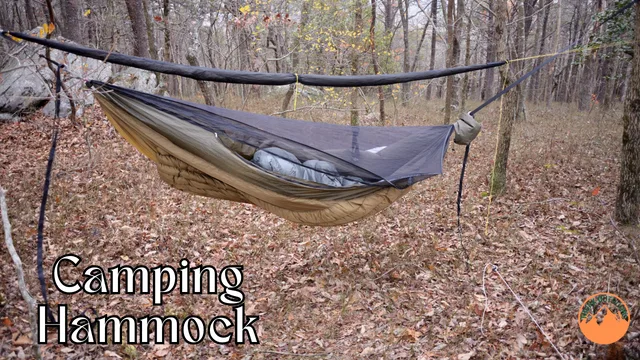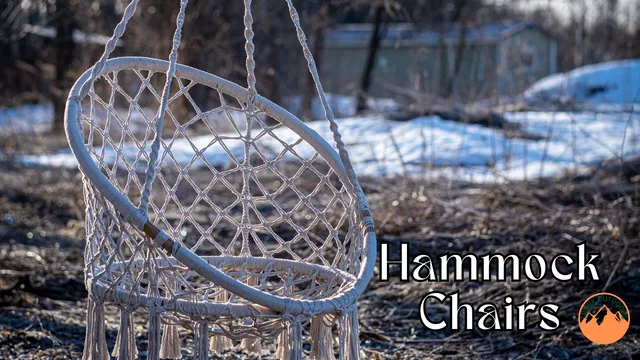How to Get in and Out of a Hammock Safely: Ultimate Guide
If you’re new to hammocking, getting in and out of a hammock may seem daunting. However, with some practice and guidance, you can easily and safely get in and out of your hammock. In this guide, we’ll take you through step-by-step instructions on how to get in and out of a hammock safely.
Hammock Types
There are many different types of hammocks available, each with its unique features and benefits. Here are some of the most common types of hammocks:
1. Rope Hammocks: These hammocks are made from thin, twisted ropes and are ideal for warm weather conditions. They are lightweight, breathable, and offer a traditional, classic look.

2. Fabric Hammocks: Fabric hammocks are made from materials like cotton, polyester, or nylon and are available in various colors and designs. They are comfortable and durable, making them an excellent choice for everyday use. You May Like: How to Clean a Fabric Hammock

3. Camping Hammocks: Camping hammocks are designed for outdoor use and are made from durable, weather-resistant materials. They are lightweight and portable, making them ideal for backpacking or camping trips.

4. Hammock Chairs: Hammock chairs are a popular alternative to traditional hammocks, offering a comfortable seat with a suspended design. They are perfect for small spaces and can be used indoors or outdoors.

How to Get In and Out of a Hammock?
Step 1: Choose the Right Hammock
Choosing the right hammock is crucial for a safe and comfortable experience.
Factors to Consider When Choosing a Hammock
When choosing a hammock, there are several factors to consider, including:
- Size: Choose a hammock that’s the right size for your height and weight.
- Material: Consider the material of the hammock, including its durability, breathability, and comfort level.
- Suspension System: Choose a sturdy and reliable suspension system that can support your weight and keep the hammock secure.
- Style: Consider the style of the hammock, including its color, design, and shape.
Step 2: Find the Right Location
Before setting up your hammock, choose the right location. Look for a spot with sturdy trees or posts that can support your weight. Ensure that the area is free from any sharp objects or debris that could damage your hammock or cause injury.
Step 3: Set Up Your Hammock
Once you’ve found the right location, it’s the turn of hammock setup. Ensure that it’s at a safe height and the right tension. Avoid setting up your hammock too high, as it increases the risk of injury from falls.
Step 4: Getting In
To get into your hammock safely, follow these steps:
- Stand facing the hammock with your back towards it.
- Hold onto the hammock’s edges and gently lower yourself onto it.
- Shift your weight to the center of the hammock and lie down diagonally, allowing your body to settle into it.
- Adjust your position until you’re comfortable and stable.
Step 5: Getting Out
To get out of your hammock safely, follow these steps:
- Turn onto your side and gently swing your legs over the edge of the hammock.
- Push yourself up with your arms and stand up slowly.
- Steady yourself before stepping out of the hammock.
Common Mistakes to Avoid When Using a Hammock
When using a hammock, there are several common mistakes to avoid:
- Not properly insulating yourself: Many new hammock users don’t realize how quickly they can become cold when sleeping in a hammock, even in mild temperatures. Make sure to properly insulate yourself with a sleeping pad or an under quilt.
- Improper setup: Making mistakes while setting up your hammock can lead to discomfort or even injury. Make sure to properly secure your hammock to avoid falls, and pay attention to the angle of your hang to ensure maximum comfort.
- Overloading your hammock: Be mindful of the weight capacity of your hammock, and avoid overloading it with too much weight. This can be dangerous and may cause damage to your gear.
- Using a hammock near a hazard: Using a hammock in or near a hazard can be dangerous and should be avoided. Hazards may include areas with high wind, steep drop-offs or cliffs, and uneven terrain. It’s important to choose a safe and stable location for setting up your hammock, away from any potential hazards.
- Using an inappropriate hammock for the environment: Choose a hammock that is designed for the specific environment you will be camping in. For example, using an open-sided hammock in a mosquito-infested area can be a recipe for disaster.
- Not properly packing it away: Improper storage and packing of your hammock can lead to damage over time. Make sure to pack it away properly after each use to help prolong its lifespan.
Additional Tips for Hammock Safety
Here are some additional tips to keep in mind for a safe and enjoyable hammocking experience:
- Always inspect your hammock before use, checking for any damage or wear.
- Never jump into your hammock or use it to swing or spin.
- Avoid using a hammock during inclement weather or in high winds.
- Use a sturdy and reliable suspension system, such as tree straps or ropes.
- Avoid using your hammock near water or other hazards.
Conclusion
Hammocks are a comfortable and relaxing way to enjoy the outdoors, and with the right setup and technique, you can safely get in and out of your hammock. By choosing the right hammock for your needs and following the steps outlined in this guide, you can enjoy a safe and enjoyable hammocking experience.
FAQs
-
How to setup suspension system correctly?
To set up a hammock suspension system correctly, follow these general steps: Choose a suitable location, Attach your straps or ropes to your anchor points, Connect your hammock carabiners or S-hooks to the suspension straps, Adjust the suspension to your preferred hang angle, Test the suspension system.
-
What is the recommended height for hanging a hammock?
The recommended height for hanging a hammock varies depending on the type of hammock you have. Here are some general guidelines:
For a gathered-end hammock without spreader bars , the best height is around 6 to 8 feet off the ground.
For a hammock with spreader bars, the optimal height is about 4 to 5 feet off the ground.
As a rule of thumb, the height of suspension should be approximately half of the spanned distance between your anchor points. -
How to avoid tipping over?
To avoid tipping over a hammock,
Ensure that you choose a suitable location with two sturdy anchor points that are about 10 to 15 feet apart.
When entering and exiting the hammock, try to keep your weight centered and avoid sudden movements.
Check that the suspension system is secure and level, and use appropriate suspension hardware rated to handle your weight.
Only use the hammock to hold one person and make sure that you are not exceeding the weight limit specified by the manufacturer.
Children and pets should not play or jump on the hammock. -
What to do if the hammock flips?
If the hammock does flip, stay calm and try to roll towards the center of the hammock to distribute your weight evenly.